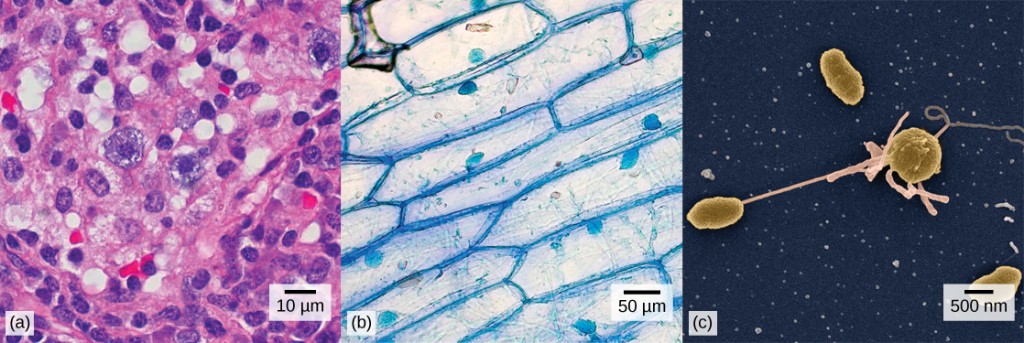Chapter 3: Introduction to Cell Structure and Function

Your body has many kinds of cells, each specialized for a specific purpose. Just as a home is made from a variety of building materials, the human body is constructed from many cell types. For example, epithelial cells protect the surface of the body and cover the organs and body cavities within. Bone cells help to support and protect the body. Cells of the immune system fight invading bacteria. Additionally, red blood cells carry oxygen throughout the body. Each of these cell types plays a vital role during the growth, development, and day-to-day maintenance of the body. In spite of their enormous variety, however, all cells share certain fundamental characteristics.
Search for Key Points in Chapter 3
Media Attribution
- Figure 3.1
- Nasal sinus cell: modification of work by Ed Uthman, MD;
- Onion cell: modification of work by Umberto Salvagnin;
- Vibrio tasmaniensis bacterial cells: modification of work by Anthony D’Onofrio; scale-bar data from Matt Russell

